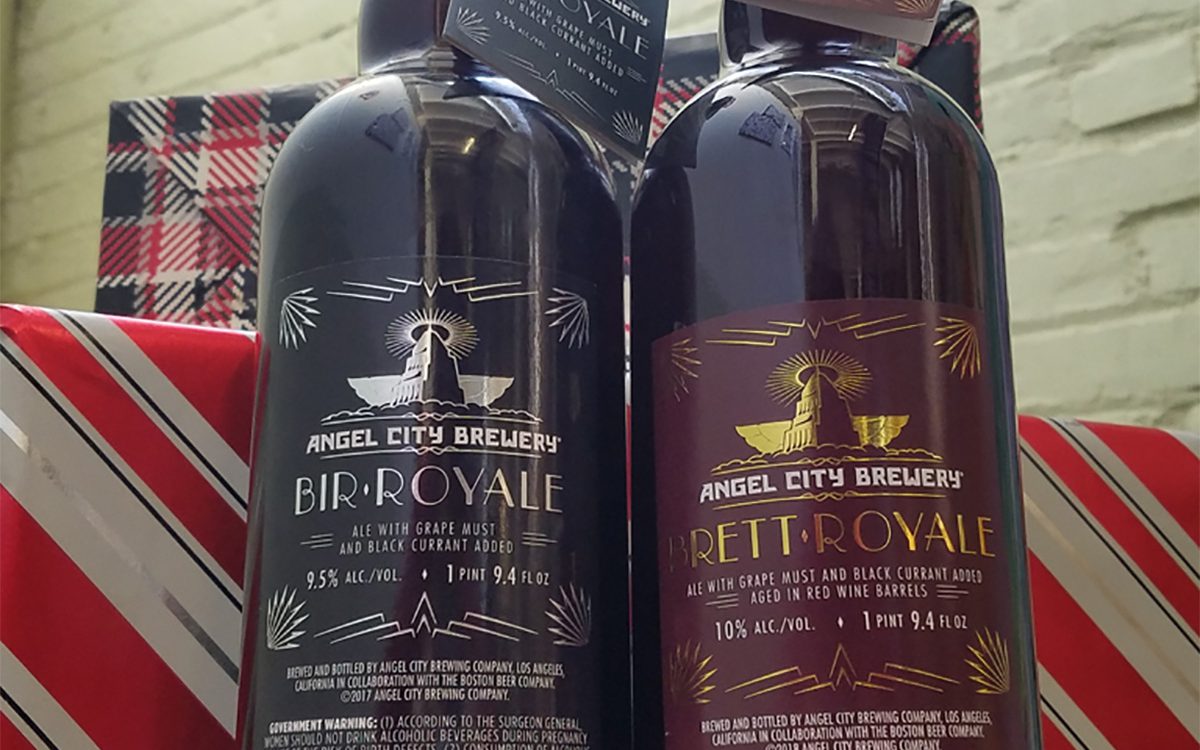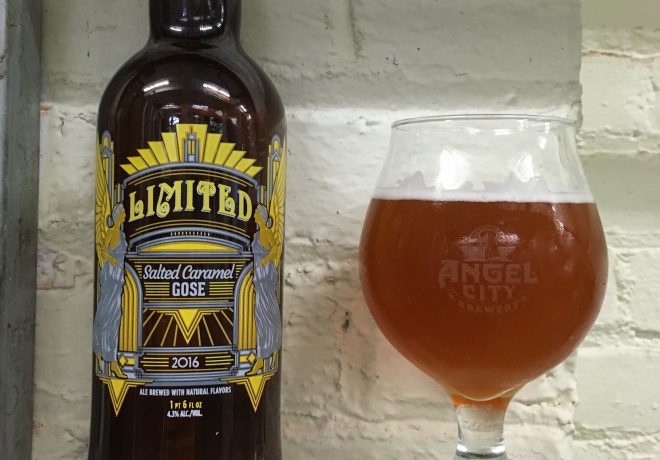In brewing, things don’t always go the way you expect them to. A change in temperature during the mash, a change in timing during the boil, even year to year variation in the hop harvest can change the final product in small but noticeable ways.
It’s why we spend so much of our energy making sure our beer is as consistent as possible from one batch to another. After hundreds of batches of Angel City IPA, we know exactly how to brew it so that it has the same fresh hop flavor week after week. Our brewers have turned that process into a well-oiled machine.
But when we’re innovating new styles of beer, we have a lot less data to work with – so intuition and experience come more into play. And if it doesn’t work, either we dump the beer down the drain – or we have to get creative.


That’s what happened last year, when we brewed a beer inspired by the classic cocktail Kir Royale for New Year’s Eve. The challenge was to take the elements you’d find in the cocktail – champagne and black currant – and bring them into a beer. The result was meant to be a bright, dry, fizzy drink to toast at midnight. But things don’t always go quite as planned.
We put the beer in tank in early November, but by the end of the month, we noticed that the beer wasn’t fermenting as expected. With all that grape and berry juice in the brew, there was a lot of sugar, which meant the yeast should have had plenty to eat up and turn into alcohol. But our tests were showing fermentation had stalled.
Was the yeast dead? Well, the slides under the microscope showed plenty of healthy yeast. So why weren’t they going to town?
The reason is in yeast choice. When making a champagne, you’d use a champagne yeast that’s optimized for the simple sugars of grape juice, and the high alcohol you’d expect in a wine. When making an ale, you generally go for an ale yeast that’s better for handling a more nutrient-rich environment with more complex sugars. But what do you do if the beer is…both?

When we brewed this batch, we chose champagne yeast – which appears to have gorged itself on simple grape sugars, and then got lazy and went to sleep before consuming the more complex malt sugars. At first, we thought the batch was ruined – it was way sweeter than what we were going for. We couldn’t serve it as is, but we didn’t want to dump such a special batch.
That’s where a little innovation came into play. What if, instead of throwing the beer away, we turn it into something new?
So the 2017 Bir Royale was put into wine barrels and became the 2018 Brett Royale.
Brett, meaning brettanomyces – another type of yeast that moves much more slowly, and much more deliberately, than either champagne or ale yeast. This slow fermentation eats up all the sugars it can get its hands on – simple and complex. And over the course of months, it dries out the beer and increases its complexity, all while the wine barrels give it a deeper champagne character.
Victory was snatched from the jaws of defeat, and what could have been a failure turned into something much more special. The Brett Royale was emptied from its barrels after nearly a year of resting, weighing in at 10% abv and tasting much better than we could have ever anticipated. And now that it’s sitting in bottles, we’re presenting it paired with our new batch of 2018 Bir Royale – this time, fully fermented and tasting like we originally intended it to.
Tasting these two bottles side by side really gives you a sense of all the work that goes into innovating a new recipe. And it goes to show just how dedicated we are to making sure that anything we put on tap meets our standards of excellence.
But more importantly, these beers are the perfect way to say goodbye to 2018 and bring on what lies ahead. Stop by the Public House today and make sure to grab a bottle of each before New Year’s – they won’t last long!






